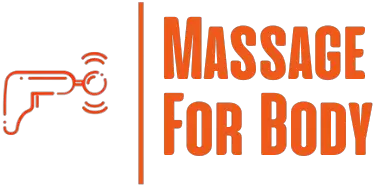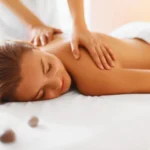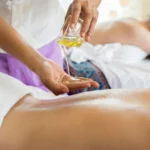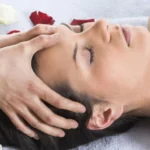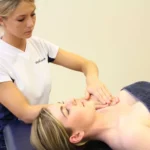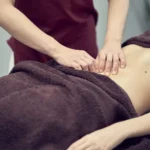Across the world, Japanese massage has become a symbol of calm precision and mindful healing. Rooted in centuries of tradition, it blends Anma and Shiatsu—two practices that bring physical, emotional, and energetic balance. This distinctive form of Japanese massage therapy transcends borders, influencing everything from modern wellness centers in New York to traditional ryokans in Kyoto.
Unlike many Western approaches that focus only on muscle tension, Japanese massage harmonizes the body’s internal energy, known as Ki. It’s an experience that quiets the mind, strengthens the body, and reconnects you to your natural rhythm.
Table of Contents
The Ancient Origins: Anma and the Birth of Shiatsu
The story of traditional Japanese massage stretches back over 1,500 years. During Japan’s Nara period (710–794 AD), Buddhist monks returned from China carrying the principles of Tuina, a therapeutic practice emphasizing rhythmic pressure and energy flow. These techniques evolved into Anma—a Japanese word meaning “press and rub.”
Originally, Anma massage was used to support recovery, boost circulation, and balance the body’s internal energy systems. But as Japan developed its own healing arts, Shiatsu massage emerged in the early 20th century, fusing ancient wisdom with modern anatomy.
Pioneers such as Tokujiro Namikoshi, who established Japan’s first Shiatsu school, and Shizuto Masunaga, who developed Zen Shiatsu, brought structure and philosophy to the practice. By 1955, Shiatsu was officially recognized by Japan’s Ministry of Health, elevating it to a respected form of Japanese bodywork used worldwide.
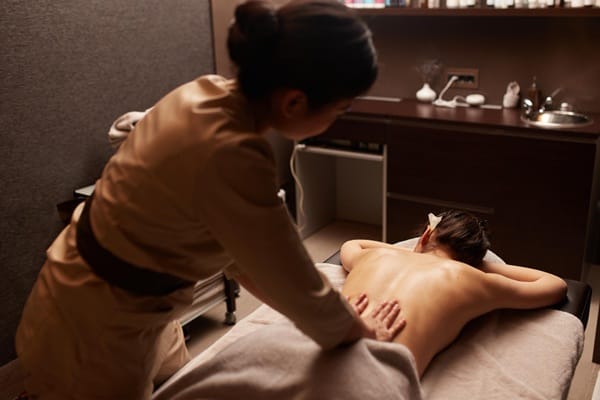
Core Techniques: The Language of Pressure and Flow
A Japanese full body massage is a dialogue between practitioner and patient—a silent conversation conducted through rhythm and touch. Using thumbs, fingers, palms, and even elbows or knees, the therapist applies steady pressure along meridian lines to guide energy flow and release stagnation.
In Shiatsu therapy, each touch is diagnostic as much as therapeutic. Pressure reveals imbalance; sustained contact restores harmony. Unlike Western massages, where oil is applied and long strokes dominate, Shiatsu Japanese massage is performed fully clothed, emphasizing intention over intensity.
Anma massage uses kneading, vibration, and tapping to stimulate the circulatory and lymphatic systems. The result is improved flexibility, detoxification, and deep relaxation. Together, these Japanese massage techniques offer a holistic system designed to heal not just muscles—but the body’s entire energetic network.
The Holistic Philosophy: Healing the Whole Person
At its core, Japanese massage therapy views the body as an integrated system where mind, energy, and physical form are inseparable. The goal isn’t simply to release tension—it’s to reestablish flow, helping the body remember its natural state of balance.
Therapists often work through specific meridians corresponding to organ systems. A session may focus on the Hara (abdomen), the body’s energy center, or on areas of chronic tightness that reflect emotional strain. As the Ki begins to circulate freely, clients often report improved sleep, digestion, mood, and focus.
The approach mirrors Japanese cultural principles: harmony, mindfulness, and respect for nature’s rhythms. Through stillness and awareness, traditional Japanese massage becomes a form of meditation in motion—a return to balance both physical and emotional.
What to Expect in a Japanese Massage Session
An authentic Japanese body massage begins quietly. You’ll remain fully clothed in comfortable garments while the practitioner observes posture and breath. The session takes place on a futon mat, encouraging grounded, fluid movement.
The therapist applies gentle pressure in rhythmic patterns, aligning their breath with yours to deepen relaxation. Gradually, your muscles release tension, your breathing steadies, and your nervous system settles into calm equilibrium.
A typical Japanese full body massage lasts between 60 and 90 minutes. Clients often describe feeling both grounded and uplifted afterward—energized yet serene, with a renewed sense of clarity that extends well beyond the session.
If you experience Japanese massage in Japan, the setting may include tatami mats, soft lighting, and tea afterward—rituals that reflect Japan’s reverence for healing as an art form.

Japanese Massage vs. Western Techniques
While Western massage styles like Swedish or deep tissue focus on muscular tension, Japanese massage seeks to harmonize the body’s internal landscape.
A Western therapist might “work out knots,” but a Shiatsu practitioner listens through touch—finding imbalance, not resistance. Where Swedish massage uses long, oil-based strokes, Japanese oil massage and Shiatsu Japanese massage rely on direct pressure, synchronized with the breath, to engage the body’s energy systems.
This subtle approach makes Japanese relaxation massage particularly suitable for stress, anxiety, or fatigue. Rather than overpowering resistance, it invites release—helping the body heal from within.
The Global Rise of Japanese Massage
From Tokyo’s wellness clinics to European spas and American holistic centers, Japanese massage therapy has earned a place among the world’s most respected healing modalities.
In North America and Europe, certified Shiatsu therapists often collaborate with acupuncturists, chiropractors, and physical therapists, integrating Japanese bodywork into comprehensive care programs. Luxury spas now offer Japanese oil massage experiences combining Eastern pressure techniques with Western aromatherapy for full-body rejuvenation.
Even in the fast-paced world of modern wellness, the simplicity of Japanese massage stands out. Its techniques require no machinery—only skilled hands and mindful presence. This purity of method is precisely what gives it enduring global appeal.

Scientific Validation: Why Japanese Massage Works
Contemporary research has begun to confirm the measurable health effects long attributed to Shiatsu therapy and Anma massage. Clinical studies indicate that Japanese massage benefits include:
- Reduced stress hormones: Sessions significantly lower cortisol levels, supporting stress recovery.
- Improved mood and mental clarity: The therapy boosts serotonin and dopamine production, enhancing well-being.
- Pain management: Regular Shiatsu massage reduces chronic pain intensity by improving circulation and muscle elasticity.
- Enhanced immunity: Gentle pressure stimulates lymphatic flow and detoxification.
- Better sleep and digestion: By regulating the parasympathetic nervous system, Japanese massage therapy promotes deep rest and balance.
These outcomes affirm that traditional Japanese massage is both art and science—its effectiveness rooted in both energetic philosophy and neurological response.
Choosing an Authentic Practitioner
When seeking a practitioner, look for certification through organizations such as the Japan Shiatsu College or the American Organization for Bodywork Therapies of Asia (AOBTA).
An authentic therapist will begin with consultation and observation, not immediate treatment. They’ll inquire about lifestyle, stress, and posture—demonstrating the Japanese value of omotenashi (wholehearted care).
As April Merrick, Wellness Editor at Massage for Body, explains:
“The beauty of Japanese massage lies in its discipline. Every motion is intentional. It’s not just touch—it’s communication, intuition, and presence in perfect balance.”
🧘♀️ Modern Adaptation: Bringing Shiatsu Home
Modern Adaptation: Bringing Shiatsu Home
For those who want to enjoy the benefits of Japanese massage therapy between professional sessions, a Shiatsu massager at home can be a great option. These devices replicate the circular kneading and finger-pressure techniques used in Shiatsu massage, helping to ease tension in the neck, back, and shoulders. If you’d like to learn how often you can safely use one for the best results, see our guide on how often to use a Shiatsu massager.
A Timeless Practice for Modern Life
In a world defined by speed and distraction, Japanese massage offers stillness. It reconnects us with what we too often ignore—the body’s innate intelligence and rhythm.
Whether experienced in a tranquil Kyoto inn or a Manhattan wellness studio, Japanese massage continues to heal through simplicity, breath, and mindful connection.
As an art form and a therapy, it endures not because it changes—but because it reminds us of what never should.

Frequently Asked Questions About Japanese Massage
What is Japanese massage?
Japanese massage refers to traditional healing techniques—including Anma and Shiatsu—that use rhythmic pressure, kneading, and gentle stretches to improve circulation, balance energy (Ki), and promote relaxation throughout the body and mind.
What are the benefits of Japanese massage?
Japanese massage benefits include reduced stress, better sleep, improved blood and lymph flow, and relief from chronic pain. It also supports digestion, immune response, and overall mental clarity through activation of the parasympathetic nervous system.
How is Shiatsu different from regular massage?
Unlike Western techniques that use oil and long strokes, Shiatsu massage applies sustained finger and palm pressure along meridians—energy lines connecting organ systems. Clients stay fully clothed, and each movement aims to restore energetic balance, not just relieve muscle tension.
Does Japanese massage use oil?
Traditional Shiatsu and Anma massage are typically oil-free. However, some modern versions—known as Japanese oil massage—blend the same techniques with essential oils or aromatherapy to enhance relaxation while keeping the therapeutic structure of Japanese bodywork.
What should I expect during a Japanese full body massage?
A Japanese full body massage usually takes place on a futon or mat. The therapist applies rhythmic pressure and gentle stretches along the meridians. Sessions last 60–90 minutes and leave clients feeling calm, balanced, and refreshed rather than sleepy or sore.
How often should I get a Japanese massage?
or stress relief and maintenance, once every two to four weeks is ideal. Those managing chronic pain or fatigue might benefit from weekly sessions initially, then tapering as their body finds balance.
🪷 Related Articles
How Often To Use A Shiatsu Massager – Learn the best frequency for safe and effective home use.
Thai Massage: The Ultimate Guide to Thai Bodywork – Discover how Thai bodywork combines movement, rhythm, and breath to release tension.
Full Body Massage: What To Expect – A complete guide to what to expect from a professional full-body treatment.
Swedish Massage: The Timeless Treatment for Relaxation and Renewal – Explore it’s its signature strokes to its powerful mind-body benefits.
How to Give a Woman the Perfect Romantic Massage for Relaxation
📚References
Nicola Robinson, Ava Lorenc & Xing Liao. “The evidence for Shiatsu: A systematic review of Shiatsu and acupressure.” BMC Complementary and Alternative Medicine, 11: 88 (2011).
https://bmccomplementmedtherapies.biomedcentral.com/articles/10.1186/1472-6882-11-88
Hiroshi Kuge, Hidetoshi Mori, Tsunehiko Wada, Mayumi Watanabe, Tim Hideaki Tanaka, Eiichi Taniwaki, Tateyuki Morisawa. “The Effects of Anma (Traditional Japanese Massage)—Randomised Trial.” Health, 14: 775-787 (2022).
https://www.scirp.org/journal/paperinformation?paperid=118560
Nozomi Donoyama, Shinichi Shoji, Tsunetsugu Munakata. “Effect of traditional Japanese massage, Anma therapy on body and mind: A preliminary study.” The Journal of the Japanese Society of Oriental Medicine, Vol. 68, Issue 4 (2005), pp. 241-247.
https://www.jstage.jst.go.jp/article/onki1962/68/4/68_4_241/_article
Research into Shiatsu – The Shiatsu Society. (2016).
https://www.shiatsusociety.org/sites/default/files/documents/Research%20Presentation.pdf
⚠️ Disclaimer:
This article is for informational purposes only and does not constitute medical advice. Always consult with a licensed healthcare provider or certified massage therapist before beginning any new treatment, especially if you have pre-existing health conditions or concerns.
